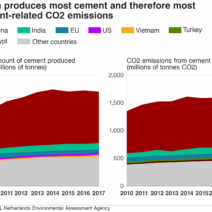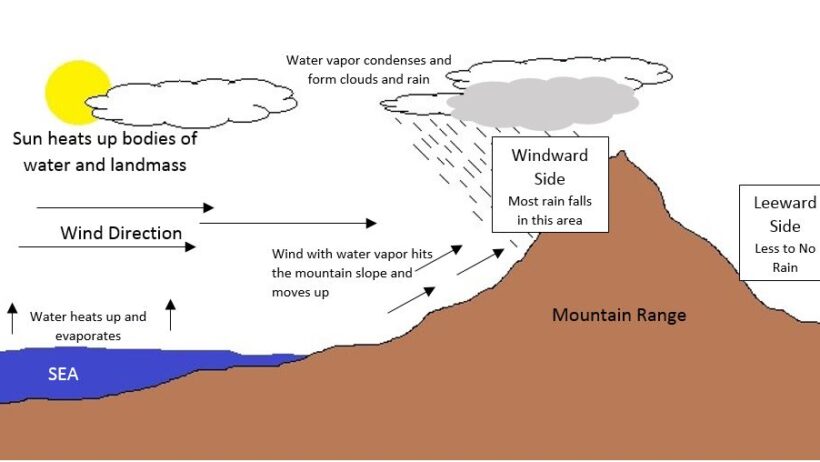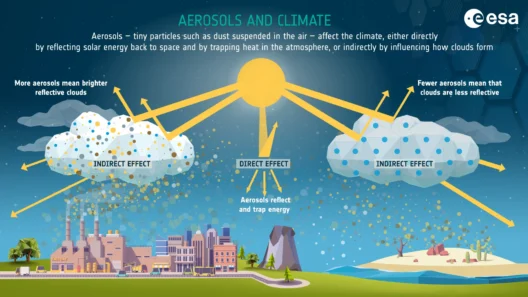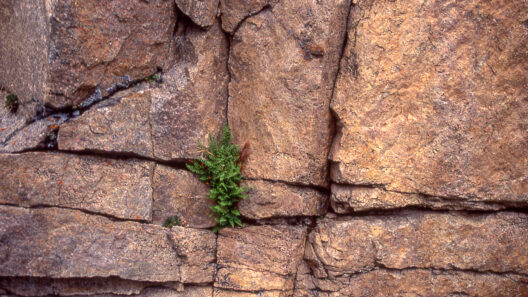Landforms, the natural features of the Earth’s surface, play an integral role in shaping not only the landscapes we inhabit but also the climatic conditions that prevail across various regions. From majestic mountains and expansive plains to winding rivers and deep valleys, understanding how these landforms influence weather patterns, precipitation, and temperature is crucial in a world grappling with climate change. This exploration will provide insights into the complex interplay between landforms and climate, revealing how geology and geography have profound implications for the biosphere.
At the most fundamental level, mountainous regions significantly alter weather patterns through a phenomenon known as orographic lift. When moist air masses approach a mountain range, they are forced to ascend. As the air rises, it cools, leading to condensation and precipitation, often resulting in lush, verdant landscapes on the windward slopes. Conversely, the leeward side, or the rain shadow, experiences a starkly different climate—arid and dry—due to the depletion of moisture in the ascending air. This disparity is exemplified by the Sierra Nevada mountain range in California, which produces a dramatic shift in climate from the wet, forested western slopes to the dry, desert-like eastern foothills.
Moving beyond mountains, consider the influence of large bodies of water, which constitute significant landforms themselves. Oceans and lakes act as climate regulators, absorbing and storing heat. This thermoregulatory capacity results in milder climates in coastal regions compared to inland areas. The moderating effect of water can be observed in places like San Francisco, where the Pacific Ocean creates a cool, fog-laden atmosphere that persists even during the warm summer months. Conversely, landlocked areas, far removed from the ocean’s temperate influence, often endure more extreme temperatures, characterized by hot summers and frigid winters.
Plains and plateaus also serve as essential landforms that affect climate. Low-lying plains may experience more uniform temperatures and greater humidity, as the flat geography allows for the free flow of air masses. However, these areas may also be susceptible to phenomena such as heatwaves—periods of excessively high temperatures that can devastate local ecosystems and agriculture. In contrast, plateaus, often elevated and surrounded by lower terrains, can experience unique climate conditions. Their elevation can lead to cooler temperatures and increased wind exposure, creating an environment distinct from the surrounding lowlands.
The geographical distribution of landforms further influences climatic zones. The placement of mountain ranges, for instance, can dictate the extent of tropical, temperate, and polar zones. The Himalayas, for example, act as a formidable barrier to cold winds from Central Asia, protecting the Indian subcontinent from harsh winters. In the absence of such natural barriers, regions that might otherwise be temperate can end up facing severe climatic conditions. This interplay of landforms is not static; it evolves over geological time scales, with tectonic shifts creating new landscapes that further alter climate patterns.
Climate is also affected by landform configuration on a more localized scale. Valleys and ridges can funnel winds, creating microclimates in otherwise homogenous regions. A valley that sits in the path of prevailing winds may receive more rainfall due to the way air is funneled through the narrow space, while nearby high ridges could remain relatively dry. On the flip side, the topography of a region can also lead to temperature inversions, where warmer air traps cooler air near the surface, causing temperature stagnation and potentially contributing to pollution accumulation.
Human activity has dramatically transformed many landforms, leading to altered climatic conditions. Urbanization creates heat islands—concentrated areas of elevated temperatures due to human infrastructure, such as concrete and asphalt, which absorb and retain heat. This phenomenon skews local climate patterns, leading to increased energy consumption for heating and cooling, increased air pollution, and a cascade of ecological impacts. The patterns established by natural landforms become overshadowed by the modifications wrought by human hands.
Understanding how landforms affect climate thus compels us to recognize the critical interdependencies within our planet’s systems. Such knowledge serves as a poignant reminder that ecosystem balance hinges not only on human intervention but also on the relationships forged between the Earth’s physical features and atmospheric conditions. As climate change advances, the integrity of these landform-climate interactions may experience unprecedented strains. Rising sea levels, for instance, threaten coastal landforms, potentially leading to altered weather patterns and devastated ecosystems.
In conclusion, the relationship between landforms and climate is intricate and multifaceted. From the towering mountains that control precipitation to the expansive oceans that moderate temperatures, each element is part of a larger climatic tapestry. Our understanding of this relationship is crucial as we navigate the complexities of climate resilience and adaptation in the face of ongoing environmental changes. By appreciating the influence of landforms on climate, we can foster a deeper awareness of the natural world and advocate for more sustainable interactions with our environment. The Earth’s landforms beckon us to explore their impacts, urging us to consider not only what lies beyond our immediate gaze but also the intricate fabric of connections that sustain life on our planet.






